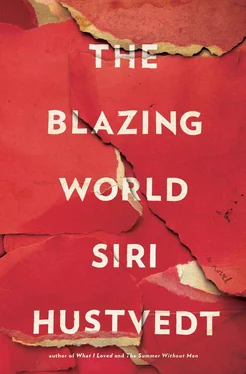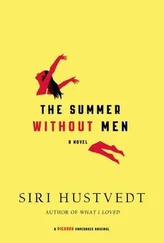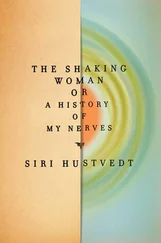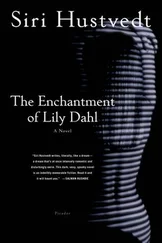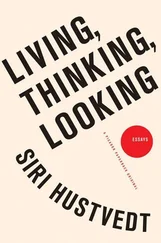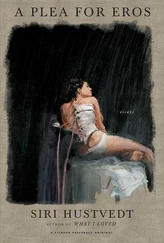Still, I was shy. The Barometer had been highly excitable because of the snow, but for some reason he, too, saw the young Tisch ogling the drawing and, in a voice quite unlike his own and in a manner entirely out of character, he shouted at the stranger: Harry did it! As I recall, it took a little time to establish that I was Harry, but once that business was cleared away, Anton Tisch, whom the Barometer took to calling “Table” almost immediately, sat down with us and we settled in for an evening of alcohol and chitchat. The content of that talk has vanished. Over time, however, I learned that the boy had attended the School of Visual Arts, did not know who Giorgione was but considered Warhol the most important artist of all time, which must have explained his silk-screen obsession. Rather than celebrities, Tisch did silk screens of his friends, presumably because their proverbial fifteen minutes had or would come. He explained that his art referred directly to Warhol while also pointing to the phenomenon of reality TV, although it was difficult to glean this information from the banal images he showed me. He liked the term conceptual and used it a lot, not unlike the way Edgar used man . Anton was not a bad kid. He was just stupendously, heartbreakingly ignorant.
I. Edmund Husserl (1859–1938). German philosopher who founded phenomenology, the study of the structures of consciousness from a first-person perspective. In Notebook H, Burden writes about the “affinities of mind” between Descartes and Husserl, their love of mathematics and logical certainties, and their shared radical doubt. “Husserl’s doubt,” she writes, “is not Descartes’ doubt. Descartes’ cogito is bedrock for deduction, which rises up from within the mental cave. Husserl’s cogito me cogitare is consciousness as relation to and toward the world.” Husserl was influenced by William James’s idea of consciousness as a stream, and he understood empathy as the path to intersubjectivity. See Dan Zahavi, Husserl’s Phenomenology (Stanford, Calif.: Stanford University Press, 2003).
II. Edith Stein (1891–1942) wrote her doctoral dissertation under Husserl, but her ideas depart from his and in certain instances resemble the work of Maurice Merleau-Ponty, whom Burden quotes extensively in the notebooks. See Edith Stein, On the Problem of Empathy , trans. Waltraut Stein (Washington, D.C.: ICS Publications, 1989). Stein edited Volume 2 of Husserl’s Ideas for publication. She was born a Jew, but she had a conversion experience after reading St. Theresa of Avila’s autobiography, converted to Catholicism, and became a Carmelite nun. Although she moved to the Netherlands to escape the Nazi threat, she was deported to Auschwitz and died there in 1942. In 1987, she was beatified by the Catholic Church.
III. Anthony Flood, “A Muddy Aesthetic,” Art Lights , January 1979.
IV. The organization was founded in 1985 in reaction to the Museum of Modern Art’s exhibition International Survey of Recent Painting and Sculpture , showcasing 169 artists, only seventeen of whom were women. The Guerrilla Girls stage anonymous protests and actions to call attention to sexism and racism in the visual arts.
V. In Notebook K, Burden devotes seventy-five pages to Kierkegaard’s pseudonyms and his “indirect communications.” From S.K.’s posthumously published The Point of View for My Work as an Author: A Direct Communication, A Report to History , Burden records the following quote: “One can deceive a person out of what is true and — to recall old Socrates — one can deceive a person into what is true. Yes, only in this way can a deluded person actually be brought into what is true — by deceiving him” ( Kierkegaard’s Writings , vol. XXII, trans. Howard and Edna Hong [Princeton: Princeton University Press, 1989], 53). Burden writes, “The path to the truth is doubled, masked, ironic. This is my path, not straight, but twisted!”
VI. Kierkegaard wrote eight satirical prefaces under the pseudonym Nicolaus Notabene. Søren Kierkegaard, Prefaces, Writing Sampler , ed. and trans. Todd W. Nichol (Princeton: Princeton University Press, 1987).
VII. Guy Debord (1931–1994), self-proclaimed leader of the Situationist International (SI), founded in 1957. This small group of Parisian artists and intellectuals (it never had more than twelve members) initially hoped to integrate art and life into an indistinguishable whole and eliminate the distinction between actor and spectator. By the 1960s, the group’s anticapitalist critique, inspired by the anarchist movement, extended beyond art to society in general. In Debord’s most famous work, Society of the Spectacle , published in 1967, he argues that images have come to dominate life, that they have become the “currency” of a society that is continually creating “pseudo needs” in its populace. The group disbanded in 1972 due to internal strife. In 1994, Debord committed suicide. Although the French press had largely ignored both the Situationists and Debord’s work, after his death, he became a celebrity.
Oswald Case (written statement)

To the gaudy denizens of Manhattan’s nocturnal scene, I was known as the Crawler, as in night and club, but my column for Blitz was called “Head Case,” a fitting tribute to Mr. and Mrs. Case, to whom I naturally owed everything. At the magazine I developed my gift for gossip and the art of innuendo, puffing up and smacking down the rich and vain and much-photographed, wheedling dirt out of bouncers and waiters and hangers-on who imagined that fame was a quality that could be rubbed off onto them, when in fact it only laid bare their puny bridge-and-tunnel lives, but I encouraged them in their idle daydreams and that’s how the Crawler trawled them in.
It is a delicate job, penning gossip, a balancing act not to be underestimated, and it is easy to go too far. Mutual dependence must always be recognized, that they need you and you need them. I hit my stride in the late seventies, in the glory days of Studio 54, nibbling up delectable tidbits here and there about Bianca and Andy and Calvin, and I had a blast, those long nights of cocaine and ludes and plain old booze and blind sex in big, fashionably empty lofts, typing for dollars in the late afternoons after I had regained consciousness. I miss those days. They had a patina now lost. Yes, glamour is gone for good, Virginia. It disappeared the moment it became democratic, and every loser could be Googled or find himself a star on YouTube. There is always an exclusive scene in the city, of course. But isn’t there something wearying about yet another celeb puking in a back room or punching a paparazzo or flashing a Brazilian wax job? Ennui set in, especially after I turned sober, the inevitable result of the decision to give up the wonders of intoxication to hold on to my liver and other body parts equally fragile.
I drifted into less taxing forms of journalism, supposedly more elevated, but I have found that the human primate varies little. Grasping and grubbing and knocking over those in your way are omnipresent characteristics of the species, and every little urban band has its own hierarchy and cycles of highly entertaining antics fueled by envy. I turned to New York’s shrinking Culture Pages, strategically written for the declining numbers of middlebrow readers, and I pounded out articles on movies, art, books, and music as a freelancer. I reviewed, and I interviewed. As a writer, I knew that it was my tone that delivered the goods; that is what they wanted, a tone of boredom and superiority that mimicked my readers’ fantasies of a posh British accent and assured them that I knew better, just as they did. I wrote to inflate them. This meant never, ever making a reference they might not understand; anything too highbrow was a no-no. The idea was to stroke their insecurities, not to bring them out.
Читать дальше
